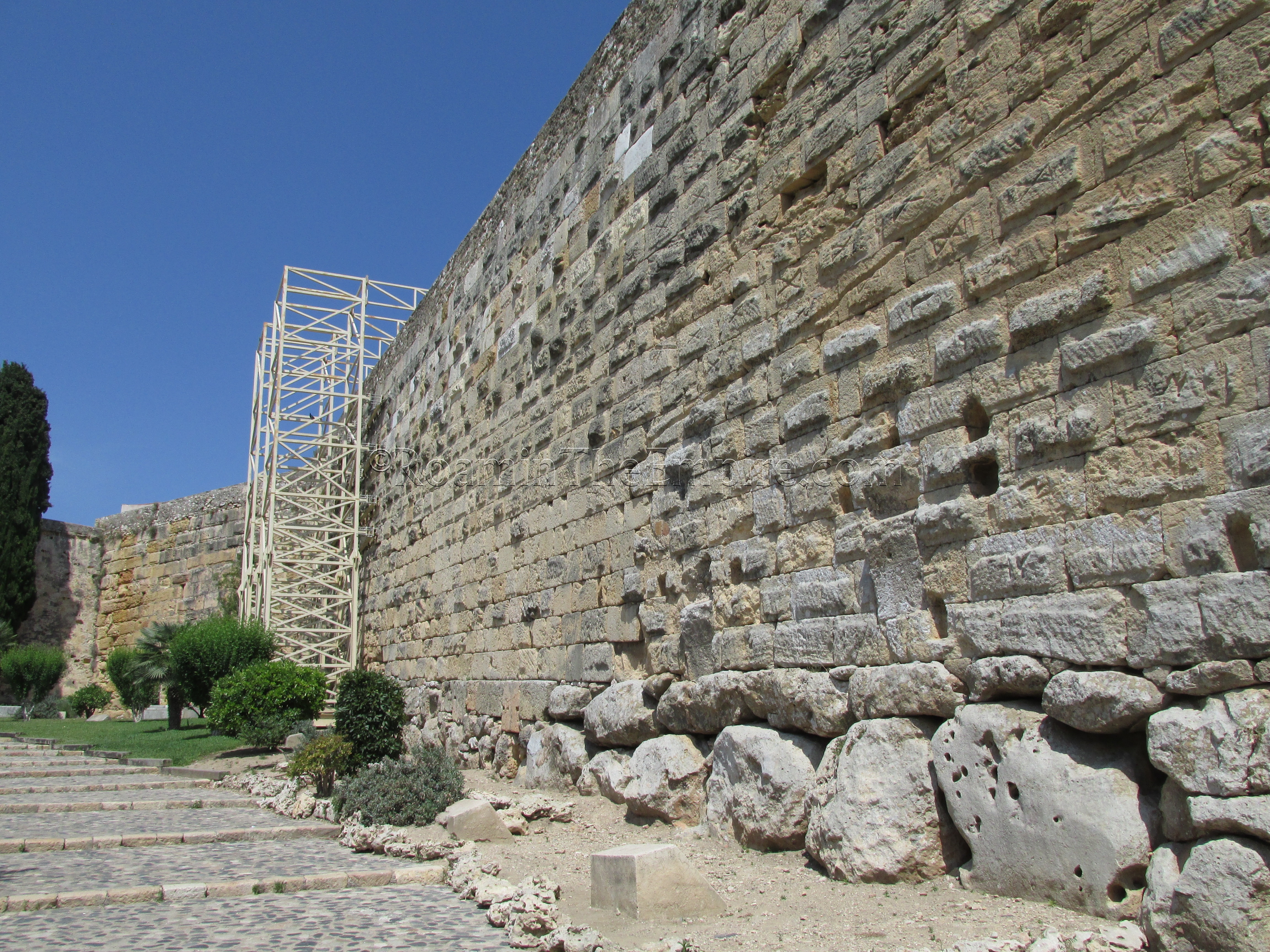
Most Recent Visit: June 2016
At the eventual site of the Roman colony of Tarraco was an Iberian settlement, probably called Cissa and belonging to the Cessetani tribe. Other names associated with the city are Cissis, Kesse, and Kosse. Another theory proposed is that it was a Phoenician colony with the name of Tarchon. The association of that name has also likely contributed to some belief in an Etruscan connection with the city. In any case, a lack of archaeological evidence associated with the pre-Roman settlement has not shed any light on the exact origins, though the Iberian settlement seems to be the most likely. Polybius refers to Cissa as the location of a battle (the first between the Romans and Carthaginians in Iberia) between Gnaeus Cornelius Scipio and a Carthaginian army under the command of Hanno in late 218 BCE. The battle was won by the Romans, and as the people of Cissa were allied with the Carthaginians, the city was apparently destroyed. Shortly thereafter, the Romans are said to have set up winter camp at Tarraco, which would have been just a military camp at the time.

From that point, Tarraco became a base of operations for the Romans against the Carthaginians on the peninsula during the Second Punic War, and later against the Iberians during the Roman pacification of Hispania and Lusitania. It is mentioned by Livy fairly frequently as an embarkation and disembarkation point for troops fighting in those conflicts. Pliny calls the city as much the work of the Scipios as Carthage was of the Carthaginians, so the military camp likely crew into a colony through the 3rd century BCE. During the Caesar-Pompey civil war, the city was apparently initially loyal to Pompey, but later changed their allegiance to that of Caesar. In 45 BCE, Caesar went a colony of non-veterans to Tarraco and bestowed the tittle of Colonia Julia Urbs Triumphalis Tarraco upon the city.
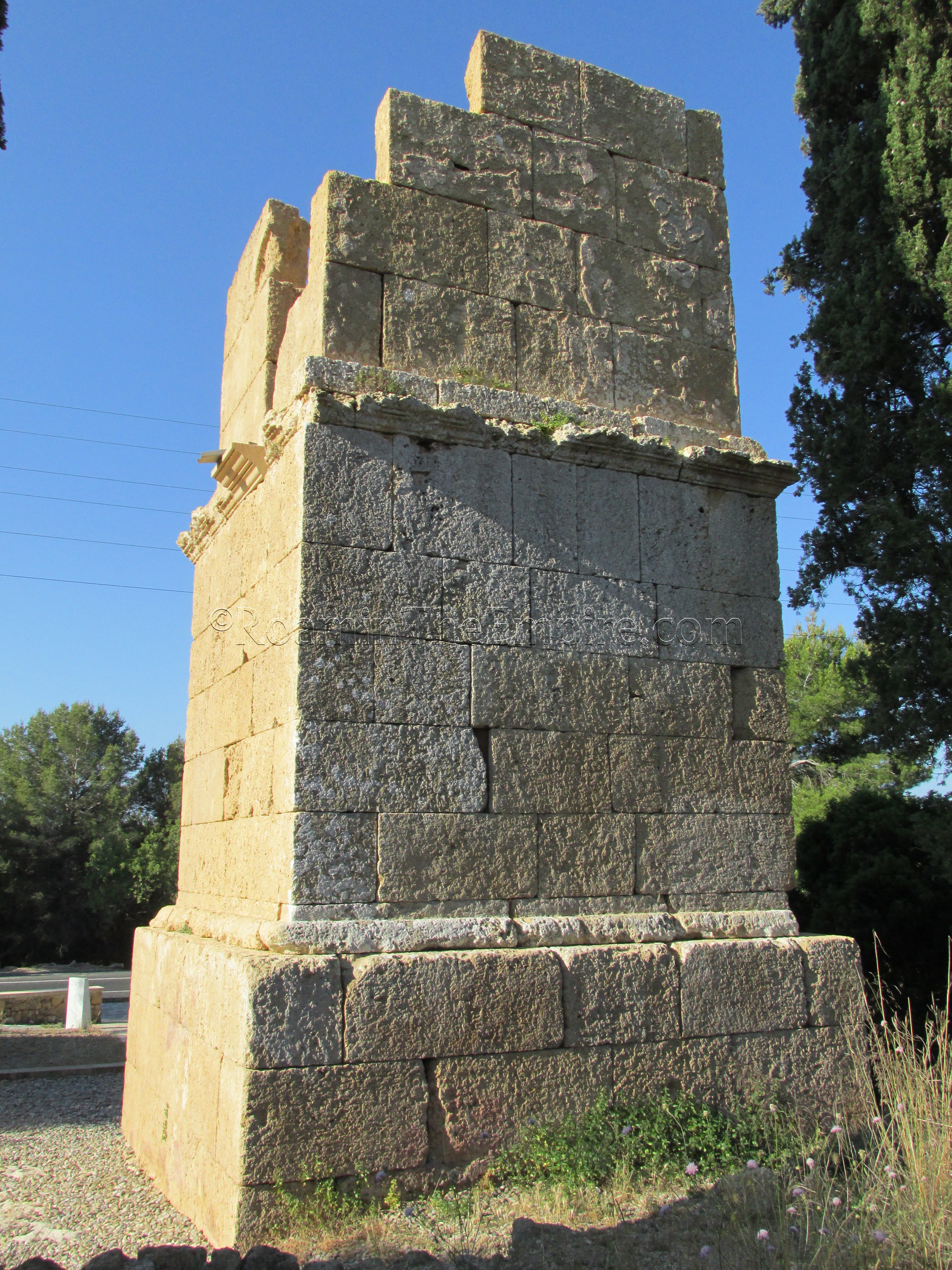
During his supervision of the Cantabrian and Austurian Wars in 26-25 BCE, Augustus took ill (abscesses of the liver, according to Suetonius) and spent this time in Tarraco rather than in the field. While here, Augustus gave the honorary titles of Colonia Victrix Togata and Colonia Julia Victrix Tarraconensis to the city. The previous year he had made the city the capital of the newly created province which bore the city’s name; Hispania Tarraconensis. After Augustus’ death, Tarraco was supposedly one of the first places to build a temple to the deified emperor, setting a precedent for the provinces.
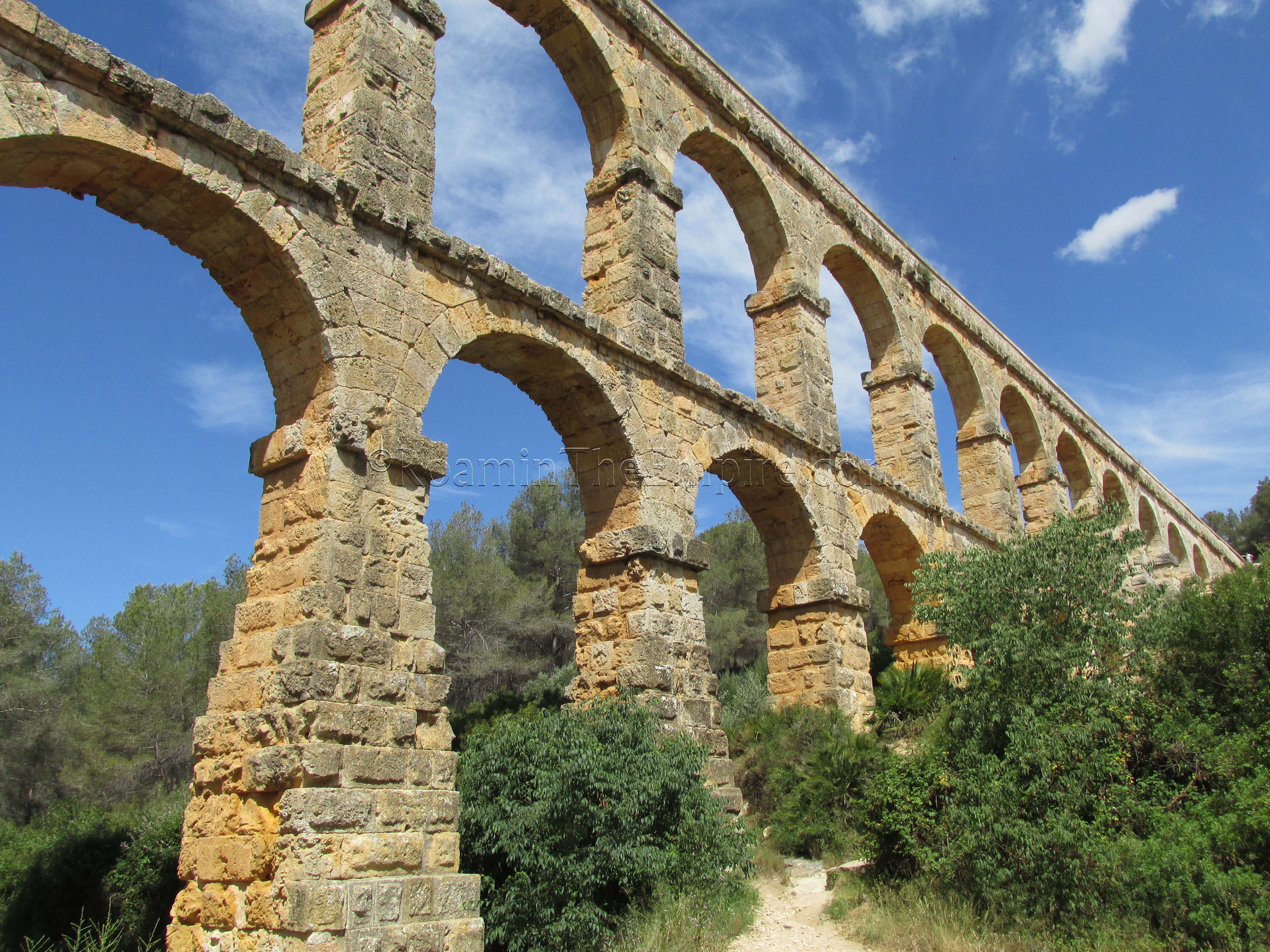
Tarraco features a few more times in the historical record. It reportedly supported Galba, who was at the time the governor of Hispania Tarraconensis, in his play for the throne following the death of Nero. Septimius Severus was also governor of the province before his emperorship and restored the Temple of Augustus during his time in the city. The city, according to Pomponius Mela was the richest on the coast, and the city prospered until it was sacked by the Franks in 257 CE. The city seems to have rebuilt but was taken by the Visigoths in 476 by King Euric, though supposedly it was a peaceful occupation.
Getting There: Tarragona is pretty well serviced by train from the surrounding cities. There are regular trains from Madrid that run anywhere from 2.5 hours on up to about 5.5, depending on the service. Trains leave Barcelona at least once every half an hour and those trains talk half an hour to an hour to get to Tarragona, most with a price of under 25 Euros. From Valencia, the trip is about 2 and a half hours on average, with some trains taking a little longer and some a little less, but the scheduled departures are not as regular. Check the Renfe website for the exact schedule and prices.
There is quite a lot of the ancient remains of Tarraco to see in Tarragona and the surrounding areas. As perhaps the second most important city on the Iberian Peninsula, after Augusta Emerita, it is no surprise that it may very well have the second most plentiful remains today. As I did with Saguntum, I won’t include detailed directions to each of the sites within the city, and instead will ask the reader to refer to an embedded map with accurate positions marked as a guide for finding the sites discussed.

The first monument worth visiting is the circus, which also includes access to the so-called ‘praetorium’. The circus and praetorium is open in the summer (April 12th to September 30th) on Tuesday through Saturday from 9:00 to 21:00, and on Monday (only May 22 to September 11), Sunday, and holidays from 9:00 to 15:00. The rest of the year it is open on Tuesday through Saturday from 9:00 to 19:00, and on Sundays and holidays from 9:00 to 15:00. It is closed on all Mondays in the offseason. Admission is 3.30 Euro, but a 7.40 Euro combination ticket can be purchased that also allows entrance to the amphitheater, forum, and the archaeological promenade of the walls (valid for up to a year). The entrance to the circus is located at Rambla Vella s/n.

Tarraco’s circus was built in the late 1st century CE, during the reign of Domitian. Originally, it measured about 325 meters long by 115 meters wide and had an estimated capacity of about 30,000 spectators. The circus ran in a Northwest-Southeast orientation with the carceres in the northwest extent, while the majority of the currently standing remains are the southeast extent. The circus was in use for about 300 years until the 5th century CE, when the grounds were reused for housing. In the medieval period, the circus was incorporated into the walls of the city; the large octagonal tower on the southern corner of the circus, near the entrance, is a medieval construction.
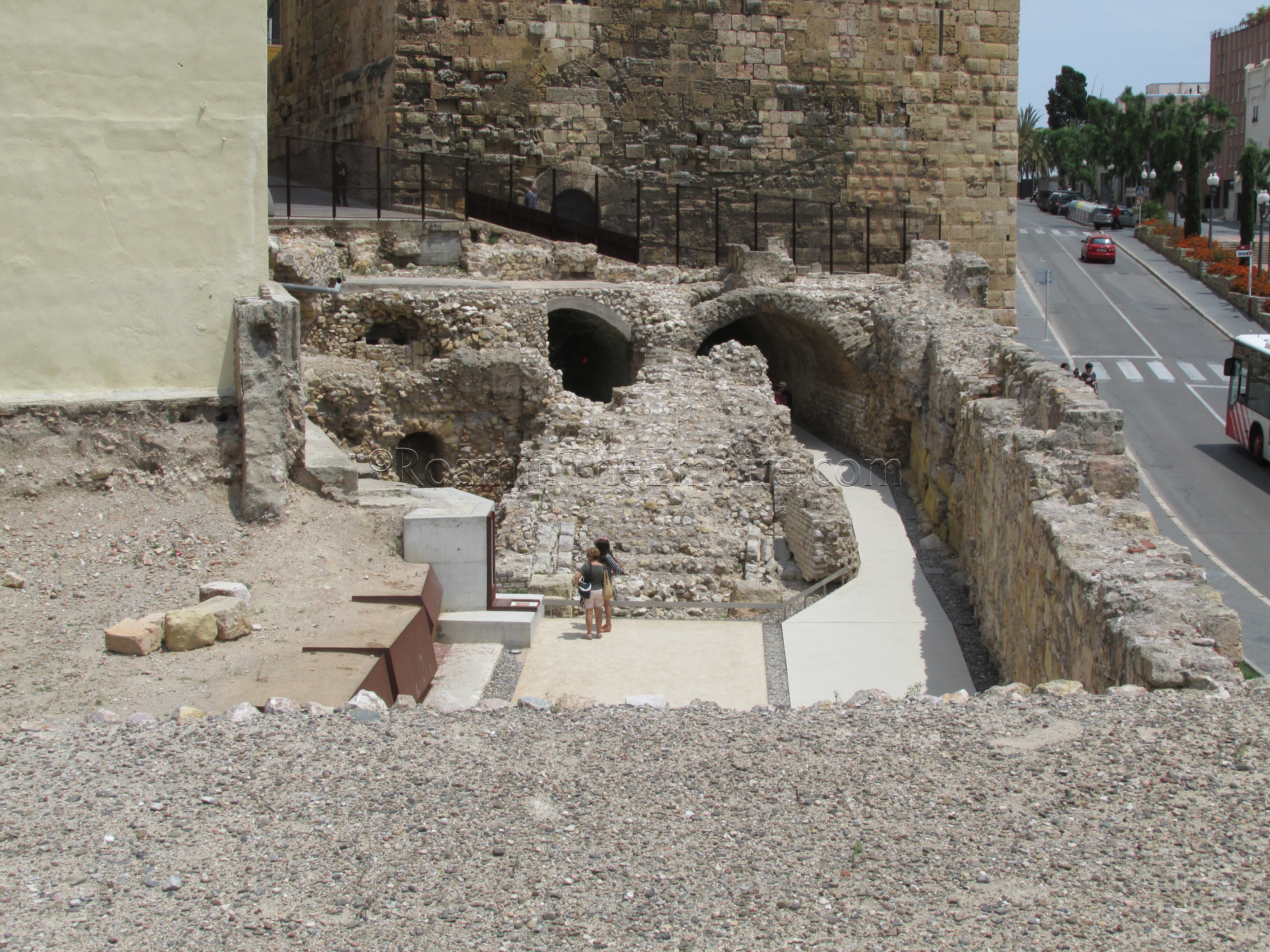
This end of the circus abutted the city walls, with the porta triumphalis of the circus actually leading through the wall to the exterior of the walls. What remains is essentially this southwestern end of the circus with vaults and supports for the seating. Inside the attraction, a long vaulted tunnel extends about 93 meters under the cavea of the circus towards the northwest for a stretch. The so-called ‘praetorium’ is actually a monumental staircase constructed about 73 CE in order to connect the lower terrace of the city, where the circus was located, with the middle terrace of the city, where the provincial forum was located. Various inscriptions and other large objects are displayed in both the circus and ‘praetorium’ sections. Good views of the city can be had from the top of the ‘praetorium’, but there isn’t anything that is particularly notable about much of it. Informational signs are present throughout both, most with English translations.

There are a few parts of the circus visible outside of the archaeological park. The section of the cavea where the tunnel is located can be viewed from the Carrer del Trinquet Vell. Another section is viewable a little further on to the northwest on Plaça dels Sedassos. Both of these are sections of the northern wall and seating of the circus. A portion of the southern seating and wall can be seen in the la Caixa bank office on the south side of Plaça de la Font, at about number 45. Even when closed, the remains can pretty clearly be seen through the window.
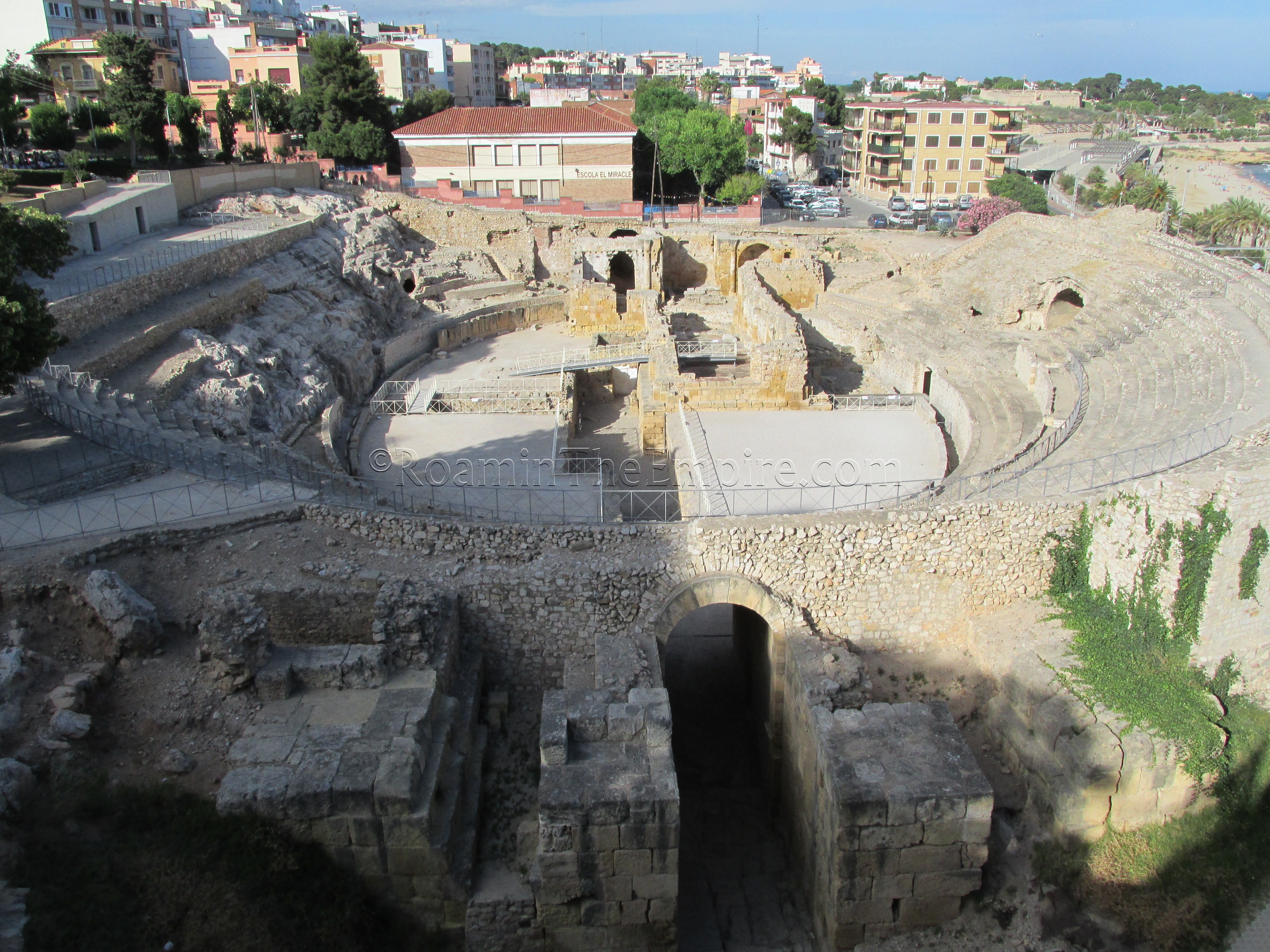
Down from the circus, towards the ocean is the amphitheater. Built during the first half of the 2nd century CE, the northern part of the amphitheater is built into the slope of the hill, at the foot of which the amphitheater sits. According to an inscription that ran along the balustrade, and portions of which are still preserved in 79 blocks around the floor of the arena, the amphitheater was restored by Elagabalus in 221 CE. Portions of the inscription are erased as part of the damnatio memoriae of the emperor. The amphitheater measures 112 meters long and 87 meters wide and has an estimated capacity of about 13,000 spectators.

Before the construction of the amphitheater, in the 1st century BCE, a stretch of the Via Augusta ran down to the port area of Tarraco through the current location of the amphitheater and was lined by some funerary structures in the 1st century CE. A portion of this road can be seen above the amphitheater, near the entrance. On January 21, 259 CE, the Bishop Fuctuoso and his deacons, Auguriio and Eulogio, were burned alive on the arena of the amphitheater. It remained in use until the end of the 4th century CE, and in the 6th century CE a Visigoth basilica to the three martyrs was built on the site of the executions. Various iterations of the church were built, culminating in the currently standing Santa Maria del Miracle, built in the 12th century CE. A Visigoth cemetery is also present, in which part of the dedicatory inscription from above the porta triumphalis of the amphitheater was reused. The construction of the train tracks to the south of the amphitheater also apparently destroyed that face of the building.
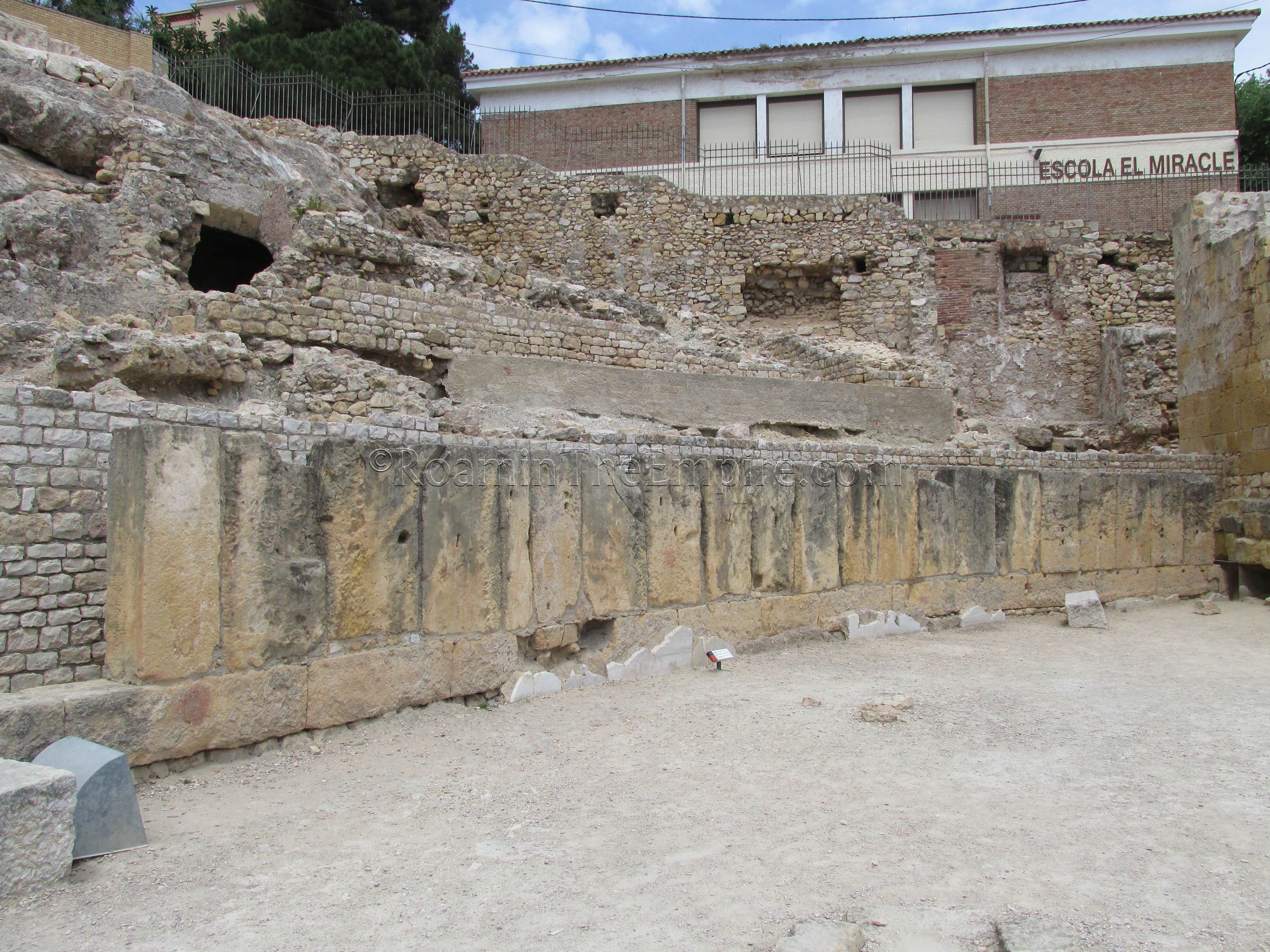
The church and cemetery take up much of the western part of the arena. The cut rock that underlaid the seating in the north part of the amphitheater is exposed and the cavea no longer present. Also present in that area is a rock-cut shrine to Nemesis at the end of the north arm of the fossa bestiaria, in which there was also a painted mural to Nemesis, now replaced by a replica. To the east of this a part of the 2nd century CE podium is preserved, and with it some small fragments of the 3rd century marble facing embedded in the arena. Blocks with Latin inscriptions and fragments of Roman funerary monuments can be seen reused in the blocks of the church in various places, a few of which are noted with placards. There are quite a few informational signs, with English translations, posted throughout the amphitheater pointing out many of the more interesting features.
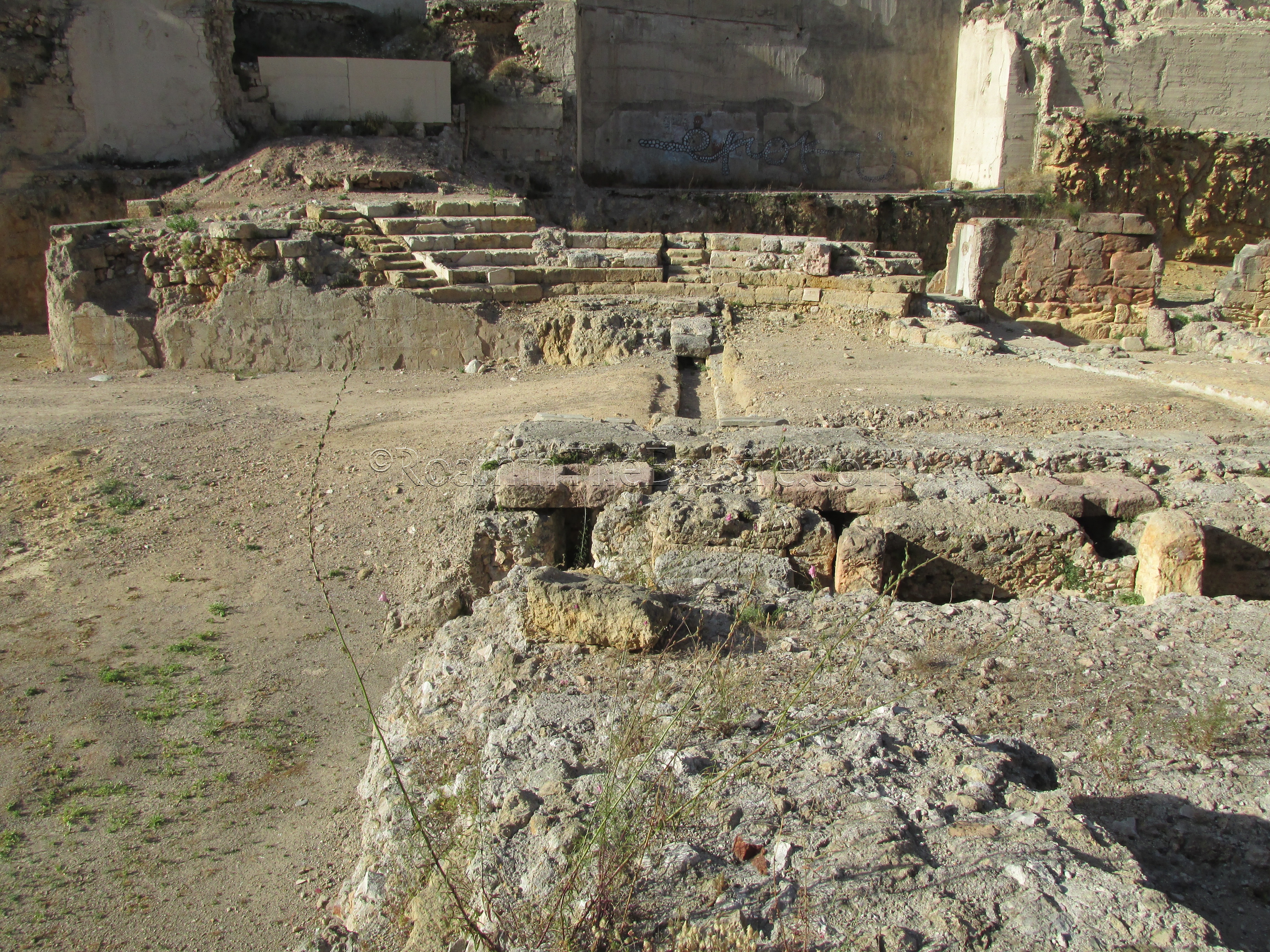
In the southeastern part of the modern and ancient city was the third of the big entertainment structures that made up a Roman city, the theater. There is no actual entrance to the theater area, but it can be viewed from various points along the surrounding streets. According to some sources, this is the only preserved Roman theater in the province of Catalonia. Like the amphitheater, the theater also took advantage of a natural slope in order to create support for the seating, which can still be seen to some degree.

It was originally constructed, like the amphitheater, outside of the city walls. It was also located more closely to the port section of the city than the circus and amphitheater, but is also fairly close to the forum. The theater was constructed in the first half of Augustus’ rule, during the late 1st century BCE, making it significantly older than both the circus and the amphitheater. It seems to have been constructed over some warehouses that were associated with the port. The theater remained in use until the late 2nd century CE, undergoing several structural changes and improvement in the intervening years. As the city itself shrank, the unused theater seems to have been used for agriculture. Despite being identified and excavated in the early 20th century, a wine and olive oil processing facility was built on the grounds, destroying much of the structure that still remained at that time. In the 1970’s an effort was again made to preserve what little remained of the theater.

A very small portion of the cavea survive as does the semicircle form of the orchestra, of which some drainage structures associated with that area or visible. Some of the scenae frons is also preserved at the foundation level. Some structures to the west are also preserved and these stall-like structures seem to be associated with a quadriporticus type building that is built off-center of the theater, not directly behind the scenae area as is the case in other settlements (Pompeii, Augusta Emerita). At about the position of the cavea and scenae frons is a little viewing area with a few panels of information, some with English translations.
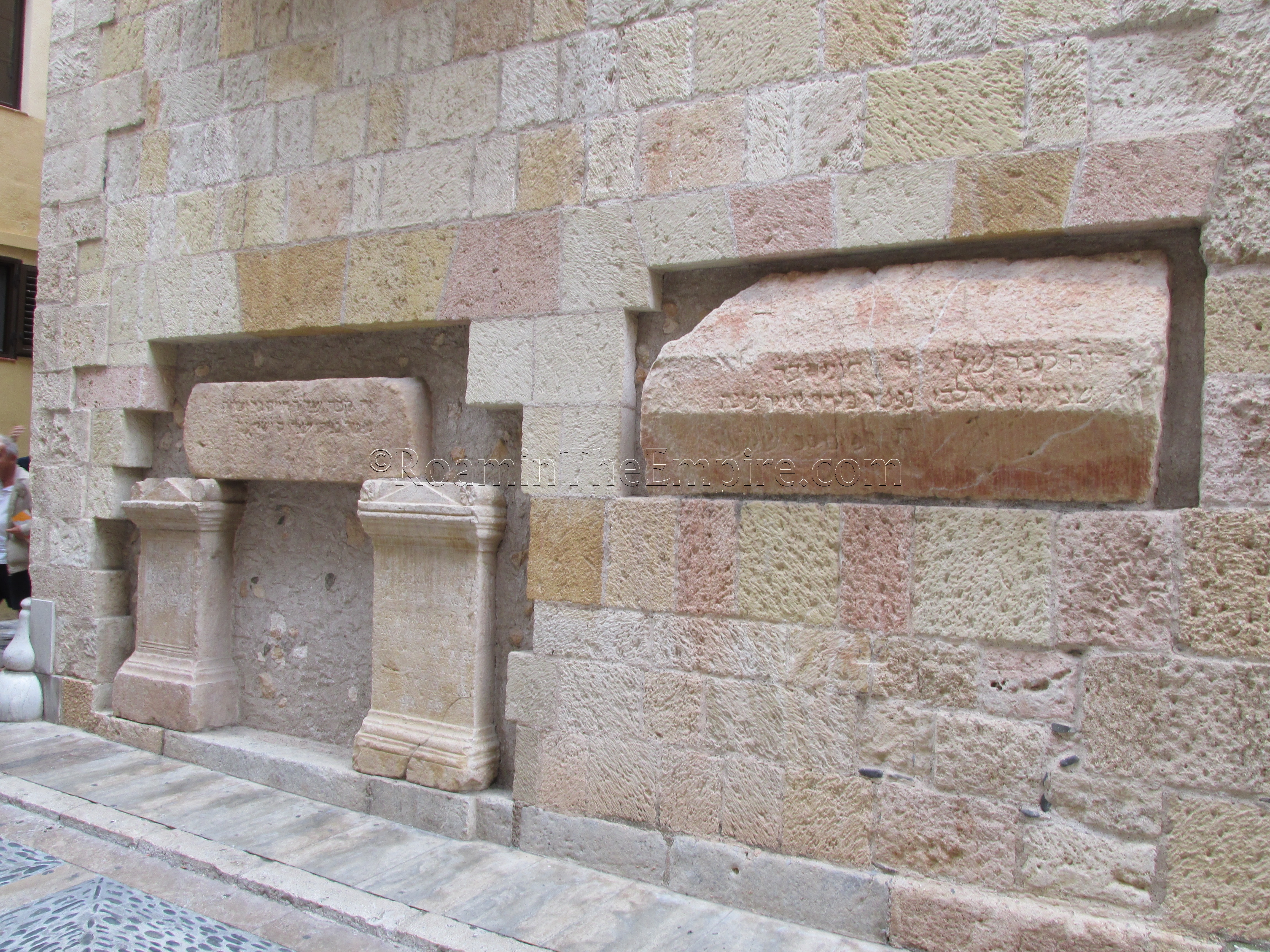
At Carrer de les Escrivanies Velles 6 is a small site, the Antigua Casa del Dega. Built into the exterior walls of this building were two Roman funerary inscriptions and two medieval Jewish funerary inscriptions. The inscriptions currently in the exterior walls are actually replicas showing the original location of the inscriptions. The Roman inscriptions are currently housed in the building, access to which is questionable, as it is currently used as a school. It was not open for viewing any of the times I passed by, but the Roman inscriptions can be seen through a large window in the front of the building, though.
Sources:
Cassius Dio, Historia Romana, 53.25.
Curchin, Leonard A. Roman Spain: Conquest and Assimilation. New York: Routledge, 1991.
Fishwick, Duncan. “The ‘Temple of Augustus’ at Tarraco.” Latomas, vol. 58, no. 1, 1999, pp. 121–138.
MacKendrick, Paul. The Iberian Stones Speak: Archaeology in Spain and Portugal. New York: Funk & Wagnalls, 1969.
Pliny the Elder, Naturalis Historiae, 3.21
Polybius, Ab Urbe Condita, 3.76.
Pomponius Mela, Description of the World, 2.80.
Suetonius, Life of Augustus, 26, 81.
Tacitus, Annals, 1.78.


